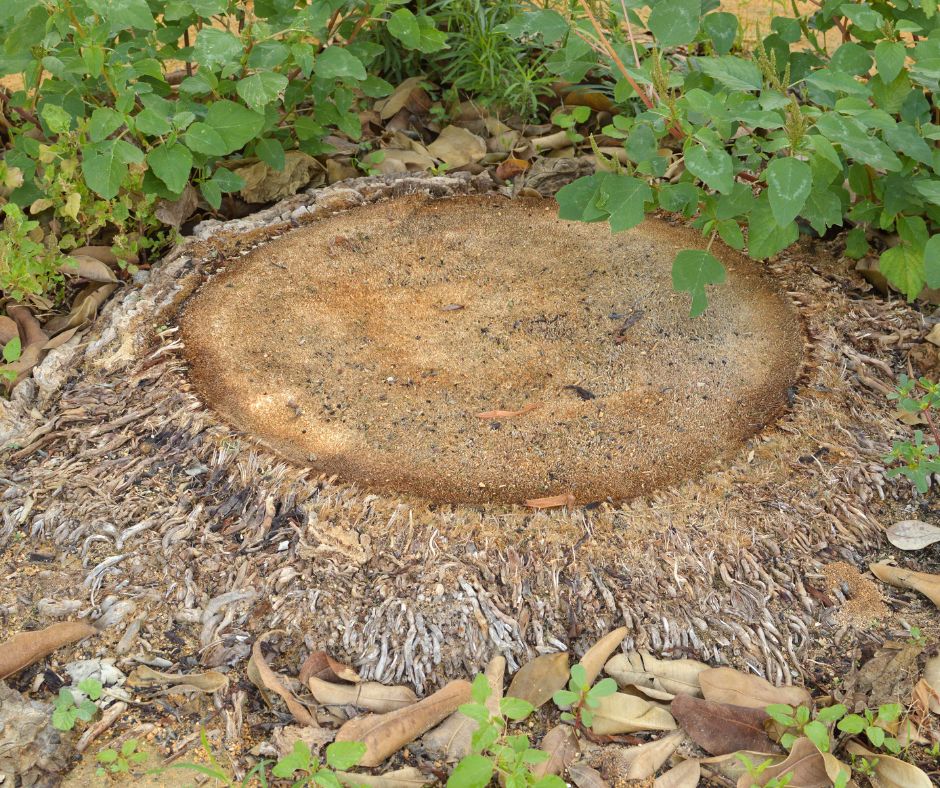Cut down palms left you ‘stumped’?
Here’s the best way to remove them.
Palm trees are a common sight across Newcastle and the Hunter Region, adding a tropical look to backyards and commercial spaces. But when a palm tree is cut down, the stump and roots can quickly become a problem.
Unremoved palm stumps can:
- Attract pests and termites
- Become a tripping hazard
- Take up valuable garden space
- Send out suckers and regrowth, especially with species like the Golden Cane Palm
That’s why dealing with palm tree stumps properly is so important.
Common Palms We Remove

At Coastwide Contracting, we often remove stumps from popular species such as:
- Canary Date Palm
- Golden Cane Palm (very common in suburban gardens)
- Fan Palm
- Dragon Tree
- Cocos Palm/Queen Palm
- Alexander Palm
- Bangalow Palm
- Yucca Trees & Palm Lillies
Each has different root structures, but all can be stubborn to remove without the right approach.
Why Palm Tree Stumps Are a Problem
When a palm is felled the stump and its fibrous root ball remain. Palms such as golden cane, queen (cocos) palms, royal palms and bangalow palms all have long, intertwining roots. These roots can push up pavers, crack retaining walls and continue to draw nutrients from your soil.
An unremoved stump also attracts pests, mould and disease and may divert water away from other plants.
To avoid these issues, removing the stump and its root system completely is essential.
Ways to Remove Palm Tree Stumps
1. How to Dig Out Palm Tree Roots
What’s Involved: Digging around the stump, cutting roots, and levering it out.
Digging out roots with picks and shovels is the most common DIY approach and this can work for small, accessible palms.You dig around the stump, severing roots as you go.
The issues:
- It’s labour‑intensive, especially because palm roots are tough and fibrous.
- Large stumps or compacted soils may require hours of effort and can still leave root fragments that re‑sprout.
- Risk of damaging underground utilities.
2. How to Dry Out a Palm Tree Stump
What’s involved: Cutting the stump low, drilling holes, and allowing it to dry out over time.
Some guides suggest accelerating decomposition, known as “rotting” or “drying out” the stump, by drilling holes and filling them with potassium‑nitrate or other chemicals.
Some common methods of drying out a palm stump include:
Epsom Salts – drilling holes in the stump and pouring Epsom salts and water down the holes until it is saturated’ covering with a tarp to keep the moisture inside, so it effectively rots out.
Herbicides – mix a glyphosate-based herbicide with water. Apply the solution by injecting it into the cambium layer, the green wood just under the bark. Repeat the application for several days, as the herbicide will be absorbed and carried throughout the stump and root.
Boiling Water – Drill several deep holes into the stump and then carefully pour boiling water into the holes and cover to allow the moisture to rot the stump down. Repeat several times, for several days.
The issues:
- Slow, labour and time intensive – the decomposition process can take weeks or months and may require multiple applications.
- Chemicals can be toxic to people, pets and other plants if not handled correctly.
- No guarantee the entire stump will decompose.
3. How to Pull Out a Palm Tree Stump
What’s involved: Using a vehicle, winch, or chains to drag the stump out!
For bigger stumps, some homeowners attach a chain to a vehicle and attempt to yank the stump out. This can succeed on light sandy soils, but dragging stumps is dangerous and we wouldn’t recommend it.
The issues:
- It can damage the vehicle.
- Tear up lawns
- Pose serious safety risks.
- Without specialised equipment, there is also a chance of leaving roots behind which may regrow.
4. How to Remove a Large Palm Tree Stump
What’s involved: Heavy digging, cutting, or machinery.
Large palms often require mechanical assistance. Hiring an excavator allows you to dig a huge hole and lever out the root ball. While effective, this option involves paying for an excavator, a truck to haul the root ball away and restoration of the site. The root system can be larger than expected, so costs quickly add up.
The Issues:
- Expensive
- Labour and time intensive
- You need to know what you are doing with an excavator
5. How to Remove a Small Palm Tree Stump
What’s involved: Digging, cutting, and/or levering them out.
Small palm stumps can sometimes be dug out by hand, but even these have extensive underground roots. The work is time‑consuming and you still risk cutting utility lines or causing unintended damage. If any roots remain, suckers may regrow around the stump.
The Issues:
- Risk cutting utility lines or causing unintended damage.
- Risk of personal injury.
- Suckers may regrow around the stump
- Time consuming and bloody hard work!
The Smart Solution: Stump Grinding & Root Removal
Instead of spending hours sweating over stubborn palm stumps, the quickest and safest solution is professional stump grinding and removal.
A professional grinder uses a rotating disc with tungsten‑carbide teeth to mulch the stump and roots, leaving the area ready for sod or new plantings.
Unlike chemical removal, grinding destroys the wood below ground level and prevents regrowth. It is also less invasive than excavating – there’s no giant hole left behind and the wood chips can be reused as mulch.
At Coastwide Contracting, we know how to:
- Work around utility lines
- Assess each stump’s root system
- Grind palm stumps below ground level
- Remove root systems to stop regrowth
- Ensure no damage occurs to your property
- Leave your yard clean, level, and ready for replanting or landscaping
- Complete the job in a fraction of the time a DIY attempt would take!

Ready to Remove That Palm Stump?
Don’t waste weekends trying to dig, burn, or drag out a palm stump.
Call Coastwide Contracting for professional stump grinding and palm root removal across Newcastle and the Hunter Region.
We make it quick, safe, and affordable.
Contact us today for a FREE QUOTE and Site Inspection on palm tree stump removal.
Stump Grinding
"*" indicates required fields



